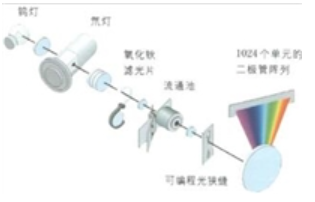Date:2025-07-11 Categories:Product knowledge Hits:380 From:Guangdong Youfeng Microelectronics Co., Ltd
7、 Development history:
A diode array detector (DAD) is a commonly used optical detector for analyzing samples in chromatography, spectroscopy, and other analytical instruments.
The development history of diode array detectors can be traced back to the 1970s. Early diode array detectors were composed of a series of serially connected diodes, each corresponding to a certain wavelength of light. These diodes selectively receive light of specific wavelengths through filters and convert photocurrent into voltage signals for detection. This design is simple and highly sensitive, but due to the crosstalk effect between diodes, the linear range of the signal is narrow.
With the development of technology, single-chip diode array detectors emerged in the mid-1980s. This design integrates multiple diodes on a single chip and directly combines the filter with the diodes through microelectronic processing technology, reducing crosstalk effects and improving the linear range and sensitivity of the detector.
In recent years, with the development of nanotechnology, nanostructured diode array detectors have emerged. This design utilizes the special properties of nanomaterials, such as quantum effects and surface plasmon resonance effects, to improve the resolution and sensitivity of the detector.

Previous: Classification, Structure, and Principle of MOSFET